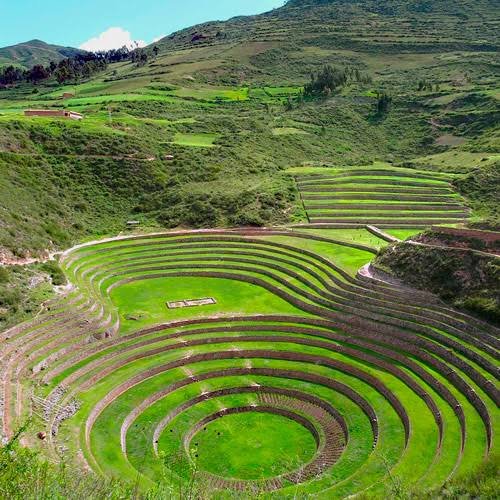MORAY
Moray is an archeological site that is located near Cuzco, in Peru. It is characterized by being made up of several circular platforms and is located at 3,500 m.a.s.l.
Moray is made up of 4 slightly elliptical galleries, which the inhabitants call “muyus”. The largest gallery has a depth of 45 m and the average height of each platform is 1.80 m. For researchers, Moray’s circular platforms functioned as an agricultural research center, where each level offered a different climate environment allowing different plants to be grown experimentally. The platforms were built on retaining walls filled with fertile soil. He watered them through complex irrigation systems. At the bottom of the platforms, there is a system that stores the water coming from the rains. Following this practice, more than 250 plant species were cultivated.
Other studies indicate that the place was used for astronomical observation and to monitor the climatic changes that could occur, by monitoring the sunlight and the shadows generated by the high mountains in the area.
MARAS
Maras is a small town located west of Cusco, Peru. It is at 3300 meters above sea level, on a plain that in the past was a plateau where you could see different snow mountains. The Sacred Valley of the Incas is a territory full of incredible landscapes and unique archeological sites. One of the most visited are the famous Salineras de Maras. This attraction is made up of thousands of small pools carved into the mountainside. These salt wells have been captured by photography lovers from around the world.
• The Salineras de Maras is made up of more than 3 thousand natural salt wells near the town of Maras.
Each of the wells has a dimension of 5 square meters.
• The 3,000 swimming pools are fed by an underground hypersaline spring that originated 110 million
years ago during the formation of the Andes Mountains.
LOCATION: It is located in the Center-South of the country, in the Andean





